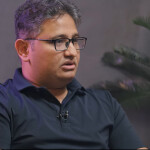Seafood Handbook Finfish Page
The Seafood Handbook is the most comprehensive seafood directory available online. Featuring more than 100 of the most common seafood species in the U.S. market, the Seafood Handbook is the ultimate guide to seafood sourcing and preparation, brought to you by the editors of SeaFood Business magazine. And it’s free!
For each type of seafood species, there is a comprehensive overview of the item, its origin, history, availability, product attributes, nutritional value and cooking tips, along with an original hand-drawn depiction.
Explore Finfish by searching here:
The ferocious-looking wolffish gets its name from the sharp, protruding teeth it uses to feast on lobsters, clams and other shellfish. Found from southern New England to Greenland and the Barents Sea, the bottom-dwelling coldwater creature is primarily a bycatch of trawl fisheries targeting cod,… Read More
By all accounts, monkfish is one of the ugliest fish in the deep, having a huge head, tiny eyes and an enormous mouth filled with needle-like teeth. On top of that, to lure other fish into its grotesque mouth, it is equipped with a peculiar apparatus that looks like a spike with a bit of meat on… Read More
Mahimahi is the Hawaiian name for dolphinfish. The Hawaiian moniker came into common use to prevent consumers from confusing this fish with the marine mammal, to which it is unrelated. The alternative name of dolphin-fish came about from the fish’s habit of swimming ahead of sailing ships, as… Read More
Alaska pollock is a member of the cod family, reflected by some of its other names: bigeye cod, snow cod and tomcod. Once dismissed as cod’s poorer cousin, the pollock has come into its own as a valuable resource, a global commodity and a popular item (credited or not) on menus around the world.… Read More
Hoki is no looker, but a rather homely, tapered, rat-tailed specimen. It’s blue-green above and silvery on the sides and belly. Hoki belongs to the hake family Merluccidae. This deepwater species is harvested year-round from depths of from 600 to 2,500 feet by trawlers working waters off New… Read More
Farming catfish is truly a U.S. seafood industry success story. It started in Arkansas in the 1960s and expanded into an economic powerhouse as Southern soybean and rice farmers built ponds and processing facilities. Most catfish farms today are located in the Mississippi Delta, with additional… Read More
The Atlantic croaker is the smallest member of the Sciaenidae family of drums. The species gets its name from the croaking sound it makes from the voluntary contraction of muscles attached to the air bladder, which acts like a resonance chamber. It’s unclear whether the croaking is a form of… Read More
Gourmands describe the Atlantic pompano as “the world’s most edible fish.” The flat-bodied, pan-sized pompano is easy to eat whole, a form that shows off the beautiful, silvery skin. The species is harvested from Virginia to Texas, but primarily off Florida’s west coast. Commercial landings… Read More
This bone-free shark possesses many of the attributes U.S. consumers are looking for. Promoters hope to find greater acceptance for the dogfish by marketing it under a Food-and-Drug-Administration-approved alternative name: “Cape shark.” Domestically, the species is found along the Pacific… Read More
The colorful tilefish, known as the “clown of the sea,” may look like a tropical species, but it is found from Florida to as far north as Nova Scotia. Tilefish inhabit a narrow stretch of ocean floor in a band of warm water along the upper reaches of the continental slope. The major fishing… Read More















